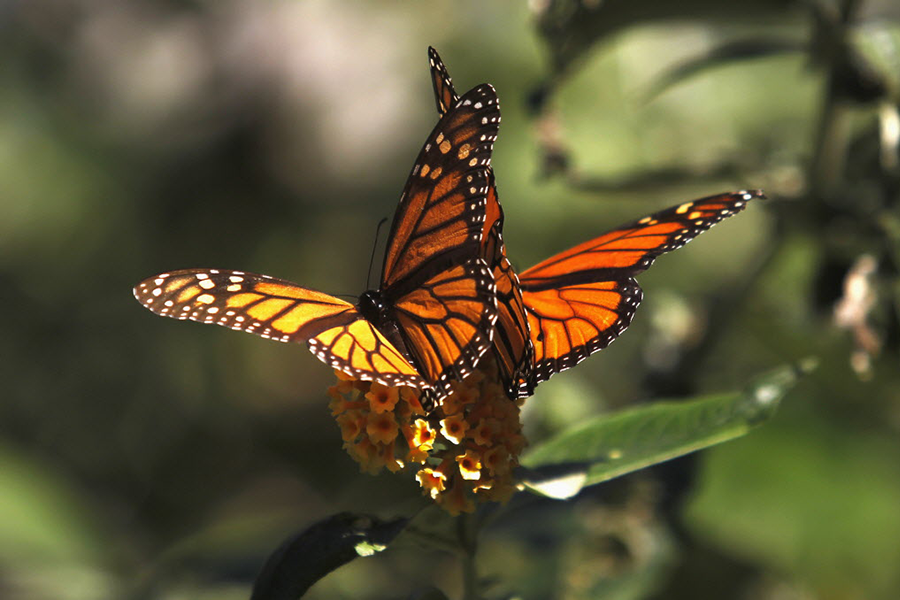How we all can help monarch butterflies as they migrate
Loading...
Majestic monarch butterflies are key pollinators for crops across North America. But over the past 20 years, their population has declined by 80 percent.
Two environmental groups are pushing the US Fish and Wildlife Service to protect these butterflies under the Endangered Species Act, but it doesn't have to come down to just policy.
As North America slides into fall, the majestic monarch butterflies will be striking out toward warmer weather. These delicate fliers can migrate some 3,400 miles from the United States and Canada to their wintering grounds in Mexico, and homeowners across their path can lend a helping hand along this challenging trek.
The butterflies will be migrating south starting in the end of August and through the middle of September. Some stragglers will still be passing through the United States into November.
Along the way, the monarchs will need something to snack on. So Rob Zimmer, a nature and garden writer, suggests tailoring your fall garden to provide nectar for the traveling butterflies.
In an article for the Wisconsin State Farmer, Zimmer writes:
Instead of cleaning up your garden beds after the summer season, plant fall blooming annuals and perennials to keep the show going through Halloween. This provides backyard beauty, as well as a precious source of food for migrating monarchs.
Some of the best nectar plants for monarchs during late summer and fall are annuals such as zinnias, verbena, dahlia, cosmos, heliotrope, sunflower, lantana and others.
Perennials that are excellent choices for late summer and fall are purple coneflower, ironweed, goldenrod, black eyed Susan, cup plant, cardinal flower, joe-pye weed, turtlehead, asters, rattlesnake master and more.
He also suggests putting scraps of fruit out in a garden or yard to give the butterflies an easy, tasty snack.
The Obama administration has also lent a hand to the migrating monarchs by designating a 1,500-mile butterfly corridor along US Interstate 35 from Minnesota to Texas. That plan cuts down on mowing and herbicide use in critical areas containing milkweed and other favored monarch munchies, and includes planting those flowering plants and milkweed too.
Citizen gardeners can follow suit, leaving parts of their lawns containing milkweed and other flowers flourishing during the monarch migration.
Listing the monarch as endangered would enforce these monarch-friendly actions with restrictions on private landowners as well as public.
That could lead to a lot of lawsuits, Marci Lininger, transportation liaison for the U.S. Fish and Wildlife Service and coordinator of the Ohio Pollinator Habitat Initiative (OPHI), told Ohio's Country Journal.
But the Center for Biological Diversity and Center for Food Safety think it should come to that. The two organizations petitioned the US Fish and Wildlife Service to protect the monarch in 2014, and are putting the pressure on the department to decide whether or not to list the butterflies with a notice of intent to sue filed in early 2016.
Ms. Lininger called the petition a "wake-up call," saying, "That tells us we have work to do. We need to establish more things in our landscape to provide pollen and nectar and host plants for pollinators."
"Pollinators do a lot of work for farmers. Whether it is a bumblebee, butterfly, sweat bee or beetle, they are helping produce food. If we are losing pollinators we are losing parts of our food supply," said Lininger. "We need to change something in our landscapes. We need to create and protect enough habitat to prevent listing. If everyone does all they can, where we can, we can help divert a potential listing of the monarch."






